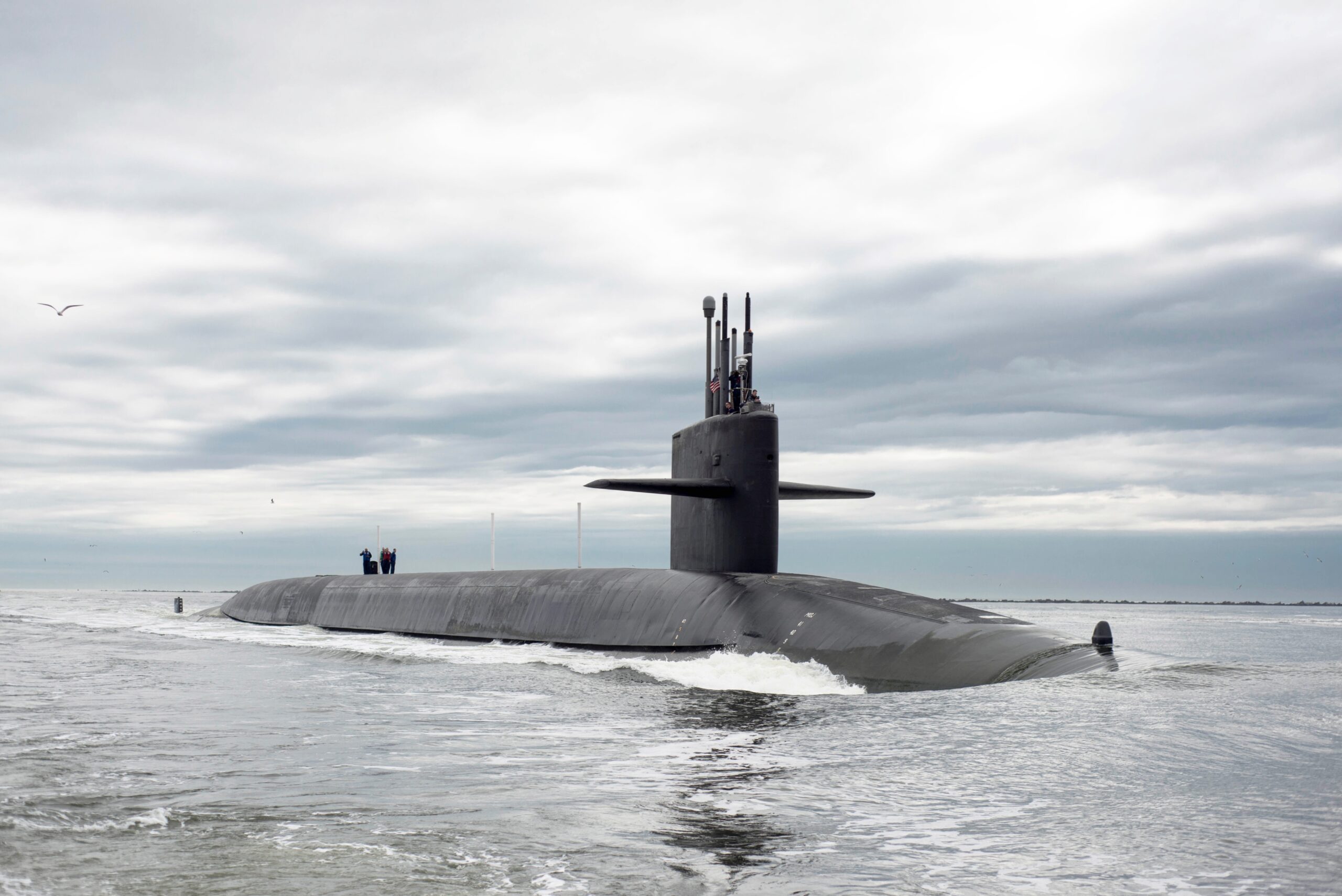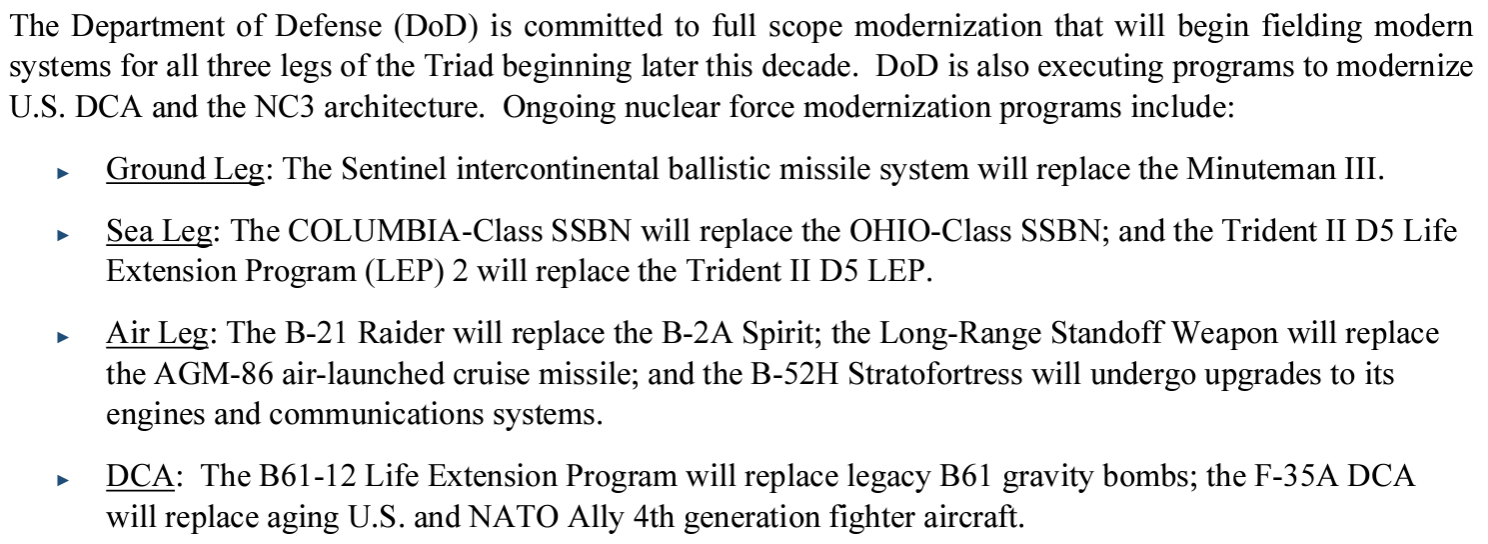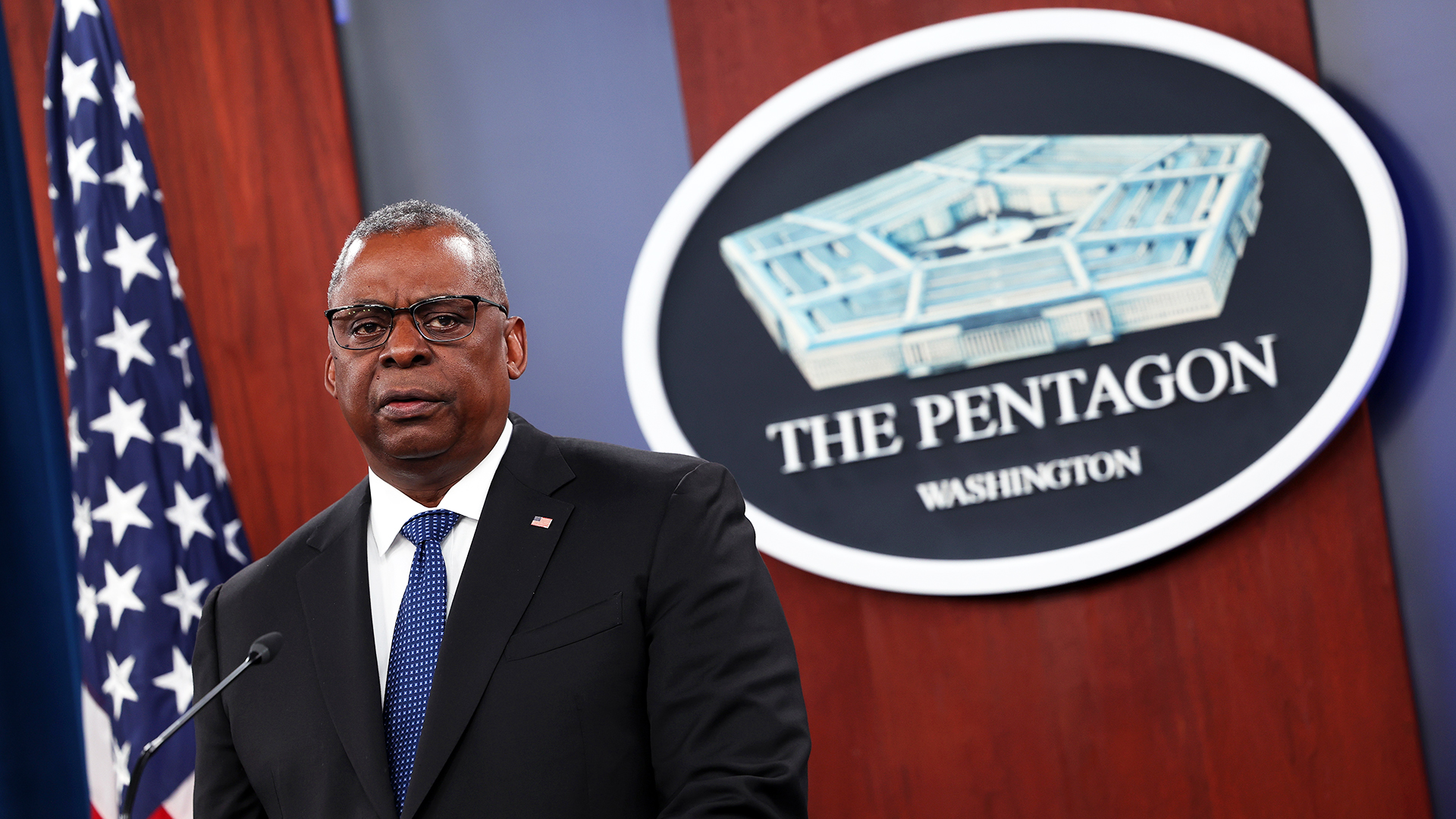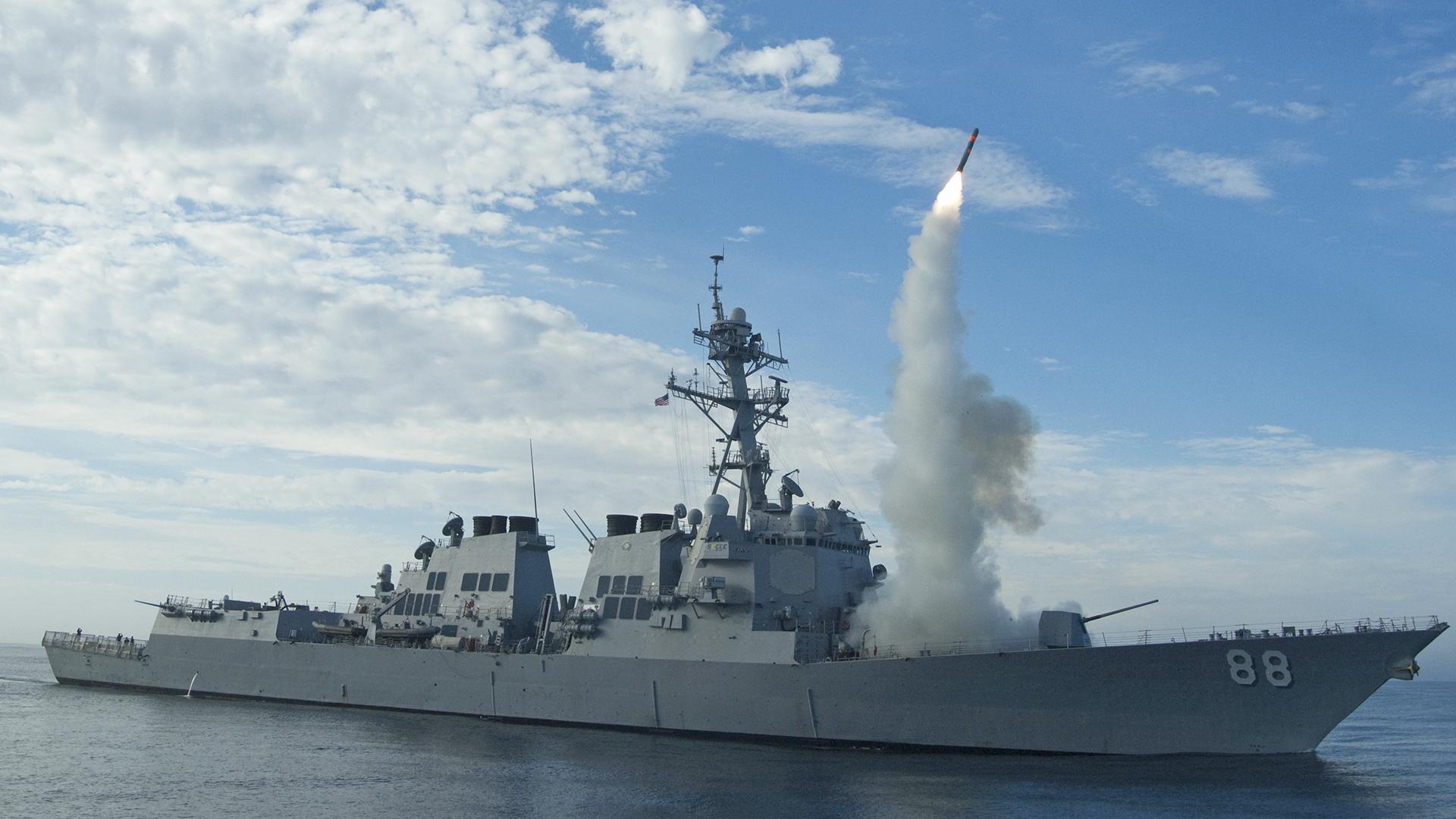The Pentagon has decided to nix its initiative to develop a nuclear sea-launched cruise missile, or SLCM-N, according to a 2022 Nuclear Posture Review fact sheet released Thursday then later confirmed by a top defense official. The fact sheet outlines that the United States will now pursue a more ‘flexible’ and ‘modern’ nuclear triad to deter strategic attack. In terms of a flexible sea-based deterrent, the W76-2 low-yield warhead that rides atop the Trident submarine-launched ballistic missile, which was fielded in 2020, will remain.
In a press briefing held Thursday following the release of several Defense Department fact sheets related to the 2022 National Defense Strategy, a senior official said that the SLCM-N program was determined through the Nuclear Posture Review (NPR) to be of “zero value.” The defense official went on to add that this especially applies now, with the conflict between Russia and Ukraine raging on, as the full extent of SLCM-N’s funding value wouldn’t even arrive until 2035.

“Our deterrence posture is firm. Russia’s been deterred from attacking NATO. We continue to focus on Russia and China. I think as it stands right now, there is no need to develop SLCM,” said the official.
The ‘flexible deterrence’ concept that is an underlying theme in the recently released Pentagon documents has been especially driven over the years by Russia. Concerns that the country could adopt a reputed “escalate-to-deescalate” strategy, which would consist of Russia using a low-yield nuclear weapon, or weapons, in an attempt to freeze a conflict and thus manipulate its outcome in Moscow’s favor, have especially inspired the adoption of these deterrence ideologies. The flexibility would come from ensuring that the U.S. has the capabilities it needs to either respond to a potential adversarial nuclear attack or deter one at a level proportional to the threat.

With that in mind, the SLCM-N concept was first proposed under the Trump administration in the 2018 NPR as a low-yield warhead option for the United States meant to better address the evolving threat landscape. If it had come to fruition, the SLCM-N would have been a successor to the U.S. Navy’s nuclear-armed Tomahawk cruise missiles. With only 367 ever produced, President George H.W. Bush ordered that they be placed in storage due to the end of the Cold War. President Obama ordered them destroyed just over a decade ago. Just like its progenitor, the SLCM-N would have manifested as a cruise missile armed with a nuclear warhead that could have been launched from surface ships or submarines.
This system was intended primarily to address the perceived need, at least by some, for flexibility in the sea-based leg of the U.S. nuclear triad. It would offer the ability to respond proportionately to a limited nuclear strike by a hostile adversary. The W76-2 was introduced alongside the SLCM-N specifically for the U.S. military’s nuclear ballistic missile submarine (SSBN) fleet to further support a similar requirement. Still, there were concerns that launching a submarine-launched ballistic missile (SLBM) from a nuclear ballistic missile submarine could trigger nuclear armageddon.
Firing a nuclear-armed cruise missile, which is predominately conventionally armed, does not send the same strategic signal that an SLBM launch does. As such, it would be a good option to have. Being placed on Navy surface ships, it would also allow for far more vectors of attack and forward presence compared to an SSBN. Also, it would not give away the location of a highly strategic SSBN when launched.


“The 2018 NPR introduced SLCM-N and the W76-2 to supplement the existing nuclear program of record in order to strengthen deterrence of limited nuclear use in a regional conflict,” reads the Nuclear Posture Review. “We reassessed the rationale for these capabilities and concluded that the W76-2 currently provides an important means to deter limited nuclear use.”
Production of the W76-2, which is a modified version of its W76-1 predecessor, had already been completed by the time President Joe Biden took office. Just weeks before he was sworn in, a report released by the National Nuclear Security Administration (NNSA) revealed that the W76-2 nuclear warheads designed for the U.S. Navy’s Trident D5 submarine-launched ballistic missiles had officially entered service. You can read about this in detail in this past War Zone report.
“The W76-2 is the nation’s response to the low-yield ballistic missile requirement called for in the 2018 Nuclear Posture Review,” the NNSA report says. “In FY 2020, assembly of the W76-2 was completed, with the full quantity produced and delivered to the Navy.”

It is unclear how many W76-2s were completed in total or how many are deployed on the Trident D5s that are loaded on the Navy’s Ohio-class ballistic missile submarines at a time. The deployment of W76-2 was first reported in 2019 when the warheads were carried aboard USS Tennessee (SSBN 734) during a deterrent patrol. While most information about the W76-2 remains classified, the Director of the Nuclear Information Project Hans Kristensen wrote for the Federation of American Scientists in 2020 about what a W76-2 deployment could look like.
“We estimate that one or two of the 20 missiles on the USS Tennessee and subsequent subs will be armed with the W76-2, either singly or carrying multiple warheads. Each W76-2 is estimated to have an explosive yield of about five kilotons,” read the Federation of American Scientists article. “The remaining 18 missiles on each submarine like the Tennessee carry either the 90-kiloton W76-1 or the 455-kiloton W88. Each missile can carry up to eight warheads under current loading configurations.”

President Biden has long been a harsh critic of the development and deployment of new low-yield nuclear weapons out of fear that it would increase the U.S. government’s likelihood to use such weapons in a crisis. He directly opposed the W76-2, for instance. Now in his second year in office, the decision to abandon the program certainly has support from the top.
SLCM-N was first introduced to the chopping block during this year’s drafting process for the Fiscal Year 2023 budget due to its prohibitive cost and acquisition schedule, but that isn’t to say that the SLCM-N didn’t still wasn’t endorsed by other Defense Department officials. U.S. Chairman of the Joint Chiefs of Staff Mark Milley is among those who still think canceling the SLCM-N isn’t the best idea.
Speaking to the House Armed Services Committee in April, Milley insisted that his position on the SLCM-N program remained, explaining that he maintains his assertion that multiple nuclear options are needed in the United States. It is worth noting that, if Congress is to come under Republican control in the mid-term elections this November, Milley’s sentiment paired with support from other top generals could later result in the preservation of the SLCM-N program.
In contrast, U.S. Secretary of Defense Lloyd Austin has been staunch in his support of the decision to cut SLCM-N. In a Thursday press briefing, Austin said, “We determined, as we looked at our inventory, that we did not need that capability. We have a lot of capability in our nuclear inventory.” When asked about whether this decision could increase Russian President Vladimir Putin’s recent nuclear saber-rattling, Austin insisted that Putin understands what capability the United States has at its disposal.

In any case, keeping the W76-2s and scrapping the SLCM-N is just one part of an overarching review of the U.S. government’s nuclear modernization efforts that the Biden administration intends to see through. How it will continue to pan out remains to be seen, but for now, the United States’ nuclear triad remains intact.
Contact the author: Emma@thewarzone.com
